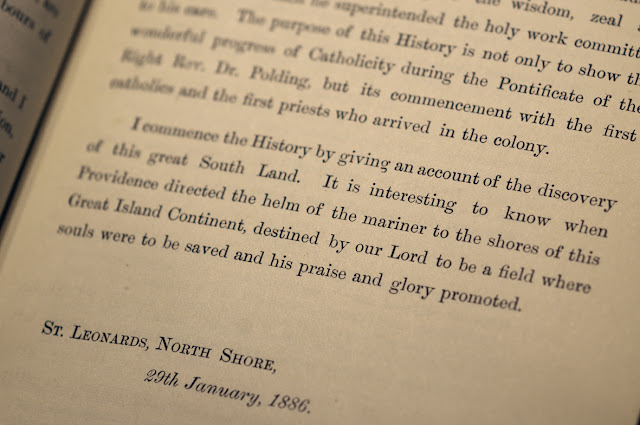Within a short time, the old Cathedral was engulfed in fire. Its interior, being almost entirely polished timber, was alight rapidly. The efforts of fire-fighters were of little avail. The courageous efforts of a few were responsible for the rescue from destruction of many of the Cathedral's treasures, and not least so the Blessed Sacrament, Reserved in a side chapel. A huge crowd of Sydney-siders gathered in Hyde Park and neighbouring roads to witness this terrible event. No such fire had hitherto been seen in Sydney.
 | |
|
By morning, it was clear that the entire Cathedral had been devastated, the interior completely gutted and the walls alone standing. Some of the stonework, notably the apse of the Cathedral, had collapsed in the blaze. Old Saint Mary's was not insured ... the scale of the loss was quite dreadful. We know now that a new and greater Cathedral was built after that disaster; but for Catholics, the destruction of their Mother-Church that night, was a terrible blow.
On the night itself a few artists seem to have sketched the events of the fire and a number of illustrations appeared quickly in newspapers and magazines. We include here one of those sketches, which shews in great detail what was happening. Firefighters, assisted by volunteers, try to control the blaze, whilst many people, their faces lit-up by the flames, look helplessly on.
The next day, a photograph was taken of the ruins of the Cathedral, looking south-east from Hyde Park. It shews the complete destruction of the timber roof as well as the interior of the Cathedral. The apse of the Cathedral did not withstand the intensity of the heat and had collapsed. The final plumes of smoke can be seen emerging from the tracery window in the western facade (facing Hyde Park).
 |
| The devastated shell of Saint Mary's Cathedral the day after the fire. |
Looking at these images and comparing them with those of Notre Dame in this week past, reminds us how quickly can be destroyed what has taken so long and so much to build.
Ut in omnibus Deus glorificetur.








